Parkhurst Allen Boot Review: Dublin the Pleasure, Dublin the Fun
Like a young Wayne Gretzky hoisting his first Stanley Cup (I couldn’t afford the rights, but trust me, he looked excited), I raised my new boots towards the heavens awaiting my wife’s response.
“They kind of look like your other boots,” is all she said.
This is partially true. There are similarities, but that’s because I know what I like. I like a well made boot that’s versatile and understated. But that’s where the similarities end between my Parkhurst Allen and my other boots. While this is a versatile boot that’s understated at first glance, it draws you in and compels you to examine it in greater detail.
The boots I am likening to the cup of Lord Stanley are also known as the Parkhurst Allen in Horween’s Natural Dublin leather.
How I Came to Buy These Boots
My journey to these boots is a bit of a winding road, but I’ll attempt to follow the crow’s path. I discovered Parkhurst boots while watching an interview with Stridewise and Andrew Svisco (owner/founder of Parkhurst). I was so impressed and inspired that I decided to go check out the website and buy a pair of boots. At that time, there were no boots available in my size and the new 602 last was yet to be released. I inquired (poor Andrew — this was the first of many emails he received from me) about the Dune Roughouts and was told that I could put my name on the waitlist, which would be 10 – 12 weeks.
So there I was, very excited to be on the waitlist for the Dune Roughout, but as I heard more about the new 602 last, I felt that it would be a better fit. I had two options: order a custom pair of Dune Roughouts on the 602 last, or purchase a pair in Natural Dublin, which was recently lasted on the 602.
This dilemma required more emails, of course, but I’ll discuss the last and the sizing later in this review. For now, let’s talk about the features.
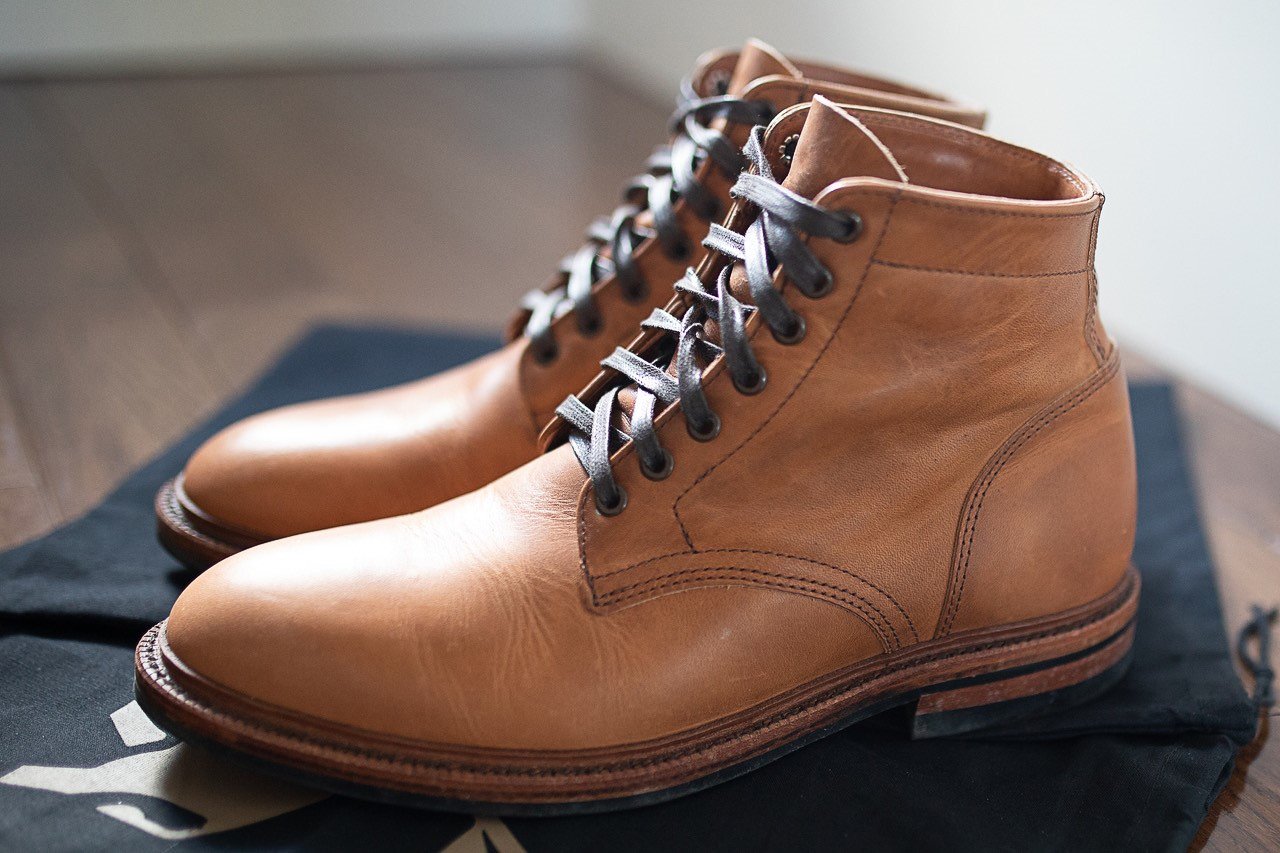
Parkhurst Allen Natural Dublin Features
- Dainite outsole
- Built heel with full rubber top lift
- Veg-tanned leather midsole and insole
- Sewn heel to arch cushion support
- Fiberglass shank
- Split reverse welt with wheeling
- Natural cork
- Horween Natural Dublin partially unlined (quarters and heel pocket) leather uppers
- Partially gusseted tongue
- 7 anchored eyelets
For starters, they come on a Dainite outsole. (I love Dainite outsoles.) The Dainite sole is paired with a built/stacked, block heel. It looks great, and it puts more leather under your feet. There’s a veg tanned midsole, a great feature on a boot in this price range, and one that will provide more support and comfort over time as your foot imprints into the layers.
They are Goodyear welted with a split reverse welt, which looks great, especially with the wheeling. This construction is resoleable and highly water resistant, similar to a storm welt, but more flexible. The boots also feature natural cork filling and a fiberglass shank; walk through those metal detectors with confidence!
There is a veg tanned leather insole as well as a sewn in heel to arch cushion. I’m not usually a fan of these cushion inserts but this is the firmest and most supportive I’ve encountered.
Seven Anchored eyelets. I’m on team speed hook, but I won’t kick these boots out of bed for eating crackers.
They come with flat waxed laces. The tongue is thick and partially gusseted. These boots are partially unlined at the quarters and heel pocket. This, I believe, is true of all Allen models, with the intention being that the unlined portions of the boot breathe better and grip the heel more effectively than a lined boot would.
[See our review of another Allen boot, the green Spruce Kudu]

Natural Dublin Leather
But my favorite spec? The Natural Dublin leather. It’s a fully vegetable tanned leather, and it’s extraordinarily rare to find a 100 percent vegetable tanned leather boot.
As a brief primer, all leather is either vegetable tanned or chrome tanned. (Or combination tanned, which is, you know, a combination of both). Chrome tanned leather is cheaper and faster to make, it holds color better, and it breaks in more easily — it’s not hard to see why it’s more popular. But vegetable tanning is thousands of years older, a method that uses tannins found in plants and bark to turn flesh into boots.
More durable and less harsh on the hide, it’s known for its excellent patina potential. It forms to your foot with wear. It’s got great depth of color. It’s full of the character and imperfections that a full grain leather can boast. It’s begging you to wrap your feet in it.
It’s also American, hailing from Chicago’s Horween Leather Company. The fact that these boots are made in Western New York with American leather is a huge selling point for many customers, especially given the price point.
[Related: The 9 Best Leathers for Boots]
Parkhurst Allen Fit & Sizing on the No. 602 Last
- Parkhurst recommends to go down ½ size from your Brannock if you are a D width, or stay true to size if you are an E width
- Snug in the heel if you are an E width
- Likely roomy in the toe box if you are D width
- Nice roomy instep, but not too roomy
Why did I think the 602 last would be a better fit for me than their original 18 last?
The short answer: I have a wider foot. The long answer: it’s complicated. If you’re like me, talking about sizing can be a point of frustration and exasperation. It can be hard enough to figure out sizing if you have a typical foot.
“Go a half size down from your standard sneaker.” Okay, but are we talking classic Chucks, Chuck 70s, New Balance, Reebok, Nike, Adidas?
“Go a half size down from your Brannock.” Okay, but I’m between measurements, and some lasts feel better with a bit of room in the toe box, some feel better a little more snug.
I kid you not, I just started sweating while thinking about this. It gets more complicated if your foot is more complicated. I spent most of my life in orthotics and going to physiotherapy for gait concerns caused by my high arches.
I’ll set aside comparisons for a moment and give it to you straight. My feet are 10 ¼ inches long and 4 ⅛ inches at their widest point. This puts me close to a 9 using a Brannock device and slightly over an E width. I also have a high instep and high arches that relax over the course of a day, requiring some room to expand.
[Related: The 10 Best Boots for Wide Feet]
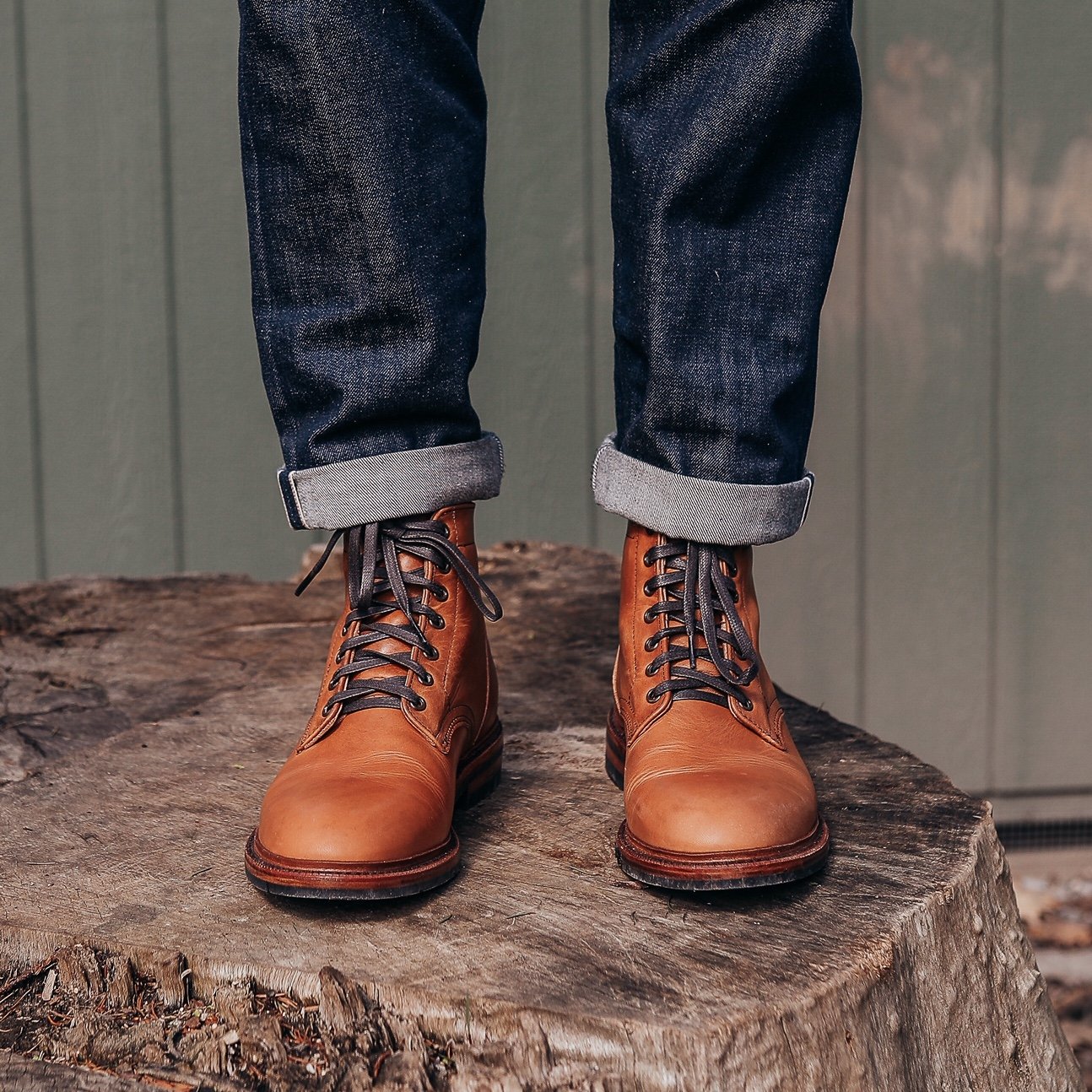
After discovering that quality footwear helped my issues far more than orthotic inserts, it took a while to figure out my sizing. Orthotic inserts impacted the size of footwear I needed, so it took some trial and error to get it right. For a long time, I was going with 9.5D, which was too long but the width hugged in the right places. After that, I realized that a 9E is usually as good as it gets for me, but sometimes 8.5EE is like baby bear’s porridge. The 602 last has an E width forefoot, a tapered heel, and higher instep.
If you’re comparing to the usual suspects, my experience has been that a size 9E on Red Wing’s no. 8 last feels a lot like a size 9 Parkhurst on the 602 last, but the 602 has a narrower heel, slightly roomier instep, and lower profile toe.
I asked Andrew about the inspiration behind the 602 last, and the answer made me appreciate these boots even more:
I named the 602 last after the name of the ship my grandfather was on in WW2. He was on an LST ship, and its number was 602. These were the ships which carried cargo and soldiers and deployed them onto a beach via two large opening doors in the front. On board, the sailors/soldiers wore more rounded toe footwear and seeing as my first/original last has an almond shaped toe to it, I wanted to come out with a more round toe and this was my inspiration for the name and design. Doing this though I wanted to achieve not only a different design, but also a different fit. The toebox is more forgiving and the heel and arch areas are slightly more tapered – not smaller necessarily, just a bit more comfortably snug so there is less heel slippage and more natural support in the arch paired with the veg tan bends leather insole.
Well, dang. If that’s not inspiring, I don’t know what is.
In addition to a great fit, the Allen model comes packed with great details.
[Learn more in our interview with Andrew Svisco here]
Parkhurst Allen Natural Dublin Price
A pair of these boots will run you $338 USD. (I’m Canadian and duty on these was an additional $131 CAD. Ouch.)
The features you get for this price make it a great value. The duty is a bummer and definitely something to factor in if you’re not in the USA.
[SHOP THE ALLEN BOOT HERE!]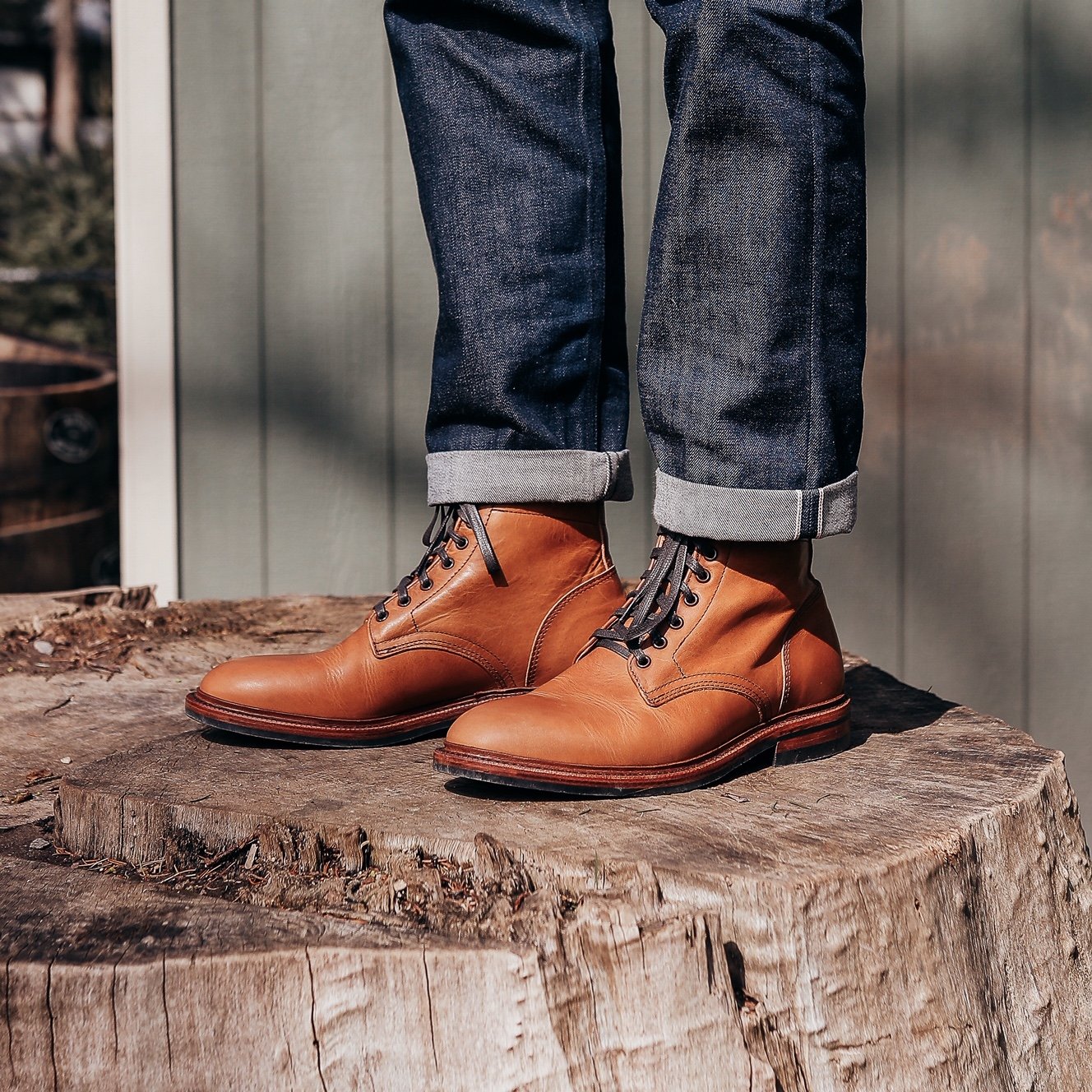
Parkhurst Allen Natural Dublin Pros & Cons
Pros
- Incredible leather
- Sharp details and great aesthetics
- Great fit and silhouette on the no. 602 last
- Solid construction
- Very water resistant
- Made in USA
- Great value
Cons
- Some prefer fully lined boots
- No speed hooks (that’s a personal preference)
- The heel counter is external and you can see the shape of the counter through the stay
- Duty/taxes if purchasing outside USA
- Not all models are available at all times
So, what’s the skinny on this E width toed boot? The Natural Dublin leather is incredible. The construction is solid and full of great features (both aesthetic and functional). They fit great while providing support and comfort that will improve over time. The new no. 602 last produces a versatile look for everyday use, dressed up or down.
I would encourage you to spend a few minutes on their website or check YouTube for reviews and interviews with Parkhurst. The ethos of the brand and quality of the product have made me a satisfied customer that is sure to return for more.
A big thanks to Parkhurst for doing what they do, and thank you to all of you for giving my wife a brief reprieve from my blathering.

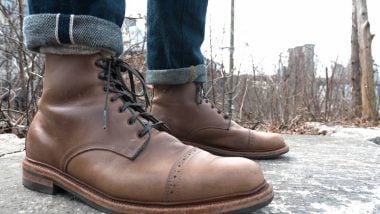
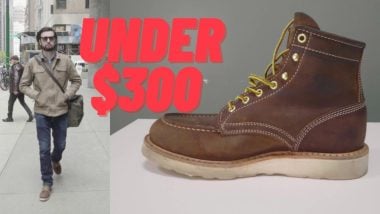
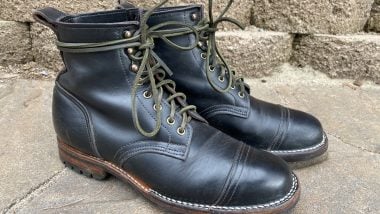
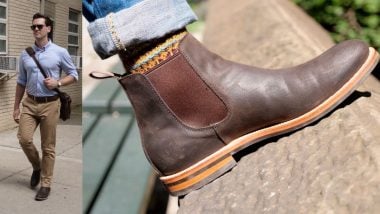

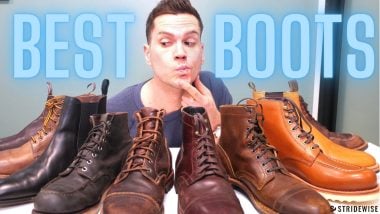

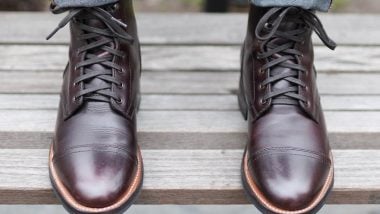
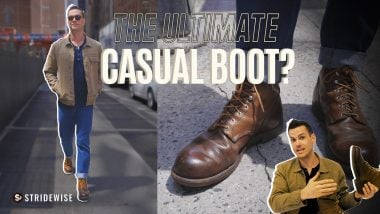
Join the Discussion